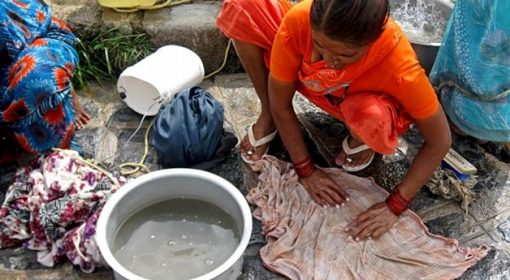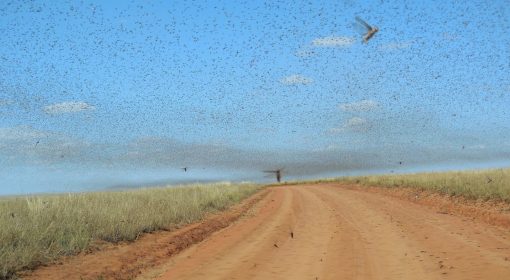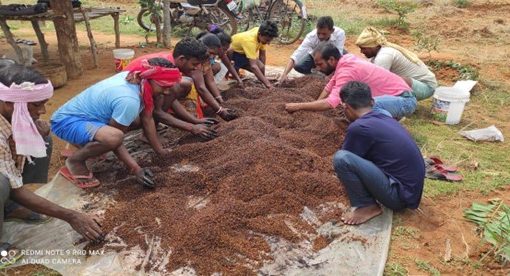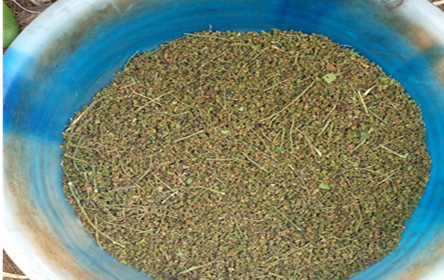by CongCong Li
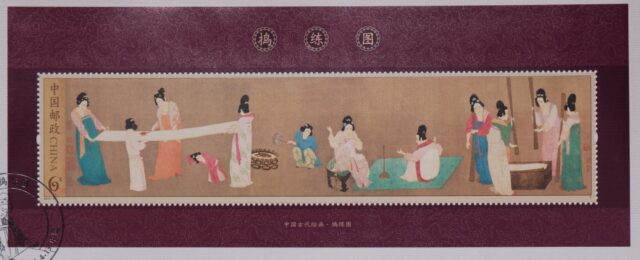
In ancient Chinese times “dǎoliàn”(捣练) – a special type of laundry – was one of the most common tasks for women. It was an important step in the process of making silk clothes. “Liàn” refers to a silk fabric made from raw silk. When the cloth is newly woven, it is stiff and yellowish. Therefore, it must be soaked in boiling water, bleached, and then repeatedly pounded with a wooden mallet to dissolve the sericin (silk glue) on the fabric, and making it white and soft. The pounded silk was then ironed flat, cut, and sewn into garments. The painting “The Court Ladies Preparing Newly Woven Silk” (捣练图) by Tang dynasty artist Zhang Xuan depicts the above silk production by palace maidens in an annual imperial silk.
Now this was the special laundry for special clothes. However, how did ordinary people in ancient China wash their clothes without modern detergents? This blog will explore the ancient Chinese practice of clothes washing and its connection to the concept of degrowth.
In washing clothes in ancient China three types of natural detergents were used: plant ash, honey locust tree and rice water.
Plant Ash
Plant ash is the ash left after burning wood, and it was used to wash clothes. It has been traditionally used for cleaning due to its ability to break down organic material. It is well known that alkaline substances are excellent at removing grease, and plant ash also contains potassium carbonate, which aids in this process.
Making plant ash into soap is an easy process. The first step is to burn the wood into ashes. The resulting ashes must be carefully filtered several times before proceeding to the next step. Then, the plant ash is mixed with water in a ratio of approximately three to seven until well blended. Next, the mixture is heated until all the water evaporates, leaving only the alkaline solution. Fats are added to the alkaline solution and the liquid is continuously heated until the liquid undergoes saponification. Once dried, this will become soap.
Then there were modifications of this basic recipe. Very interestingly, in Li Shizhen’s “Compendium of Materia Medica**”, it is recorded that during the Ming Dynasty, villagers in places like Jining even collected mugwort, dried it, burned it to ash, and added starch to produce soda ash, which yielded significant profits at the Market. Mugwort is known for its anti-inflammatory and anti-itch properties. Another variation is to grinded shells into powder and add this to plant ash, also creating a powerful cleaning agent. As shell powder is rich in calcium carbonate, it exhibits strong alkaline properties and a porous structure, making it effective in absorbing impurities and neutralizing acids. Plant ash contains potassium carbonate, which itself has cleaning properties. When mixed with shell ash in water, it produces a strong alkali, potassium hydroxide. Potassium hydroxide reduces the surface tension of water, allowing it to penetrate fabric and break down dirt.

Later, people combined pig pancreas, lard, and natural alkali to create soap blocks, known as ‘yí zi’ (胰子) in Chinese. The pig pancreas contains enzymes that help break down fats, and when combined with lard and natural alkali, it undergoes a saponification process to produce soap. Initially, due to its high cost, only courtiers had access to it. By the Ming and Qing dynasties, “yí zi” (胰子) had become increasingly affordable. The ‘yí zi’ were no longer used only by the nobility; ordinary people with some means could also afford them. Gradually, this soap has become commonly used in rural China for its cleaning properties and skin benefits.
Honey locus tree pods
Gleditsia sinensis is also known as Chinese honey locust tree. It is called皂荚 (zào jiá) in Chinese. Interestingly, the honey locust tree is dioecious, meaning it has separate male and female trees. Its pods (皂角, zào jiǎo) are only found on the female honey locust tree. The shape of the pods resembles a sword and is slightly curved.It has traditionally been used as a natural soap or detergent in China due to its rich saponin content — a natural foaming and cleansing agent. How has it been discovered? It is said that a farmer from a village went to the mountains to gather wild vegetables and discovered the honey locust tree, which bore many soap pods. The farmer picked some and brought them home, only to find that they were not edible. He then threw them into water, and a miraculous event occurred: when the soapberries were soaked in water, they produced a large amount of foam. The farmer noticed that the foam had a pleasant fragrance and decided to try using it on clothes. The result was remarkable; not only did it remove stains from the clothes, but it also left a pleasant scent. From then on, the farmer would pick soap pods every time he went to the mountains and bring them home. Eventually, everyone in the village learned about this method.
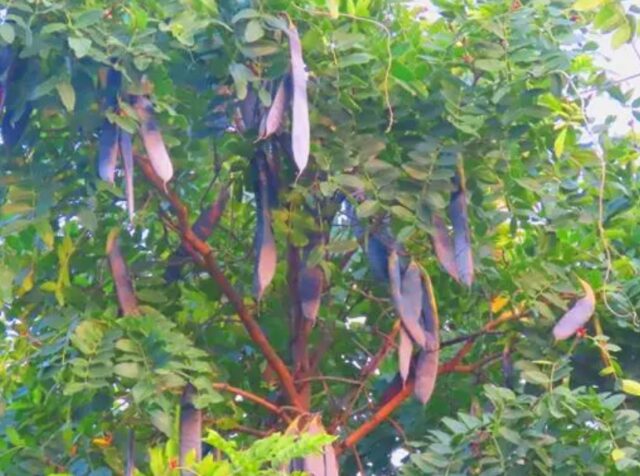
Rice rinse water
In addition, the ancient Chinese also had many tips to wash clothes more effectively. Rice washing water is one of these practices. Rice washing water has a strong cleaning effect on stains because it contains a powerful surfactant. This surfactant is similar to those found in laundry powders or liquids. It has a strong ability to remove dirt from the surface of clothing. It works by lifting stains through its action and suspending them in the water, where they are then washed away, achieving the effect of cleaning clothes. If you have a large area of yellow clothing, you can first soak it in rice washing water for ten minutes, then wash it with a little soap, and finally rinse it with clean water. Using rice water to wash clothes not only leaves them clean and neat, but also enhances the whiteness of white garments. If the clothes are stained with fruit juice or ink, rice washing water can easily clean them as well.
Move into the Future: Ancient Wisdom and Degrowth
Reflecting on traditional Chinese methods of handwashing clothes evokes the concept of sustainable degrowth. This concept arises from criticism of the idea that southern countries should follow the development model of the US and Europe, which emphasizes expanding global markets and constantly creating new technologies and in meantime creating lifes of stress and anxiety. Instead, degrowth theorists and practitioners argue for a self-determined development path in the global South. It emphasizes the use of local, natural resources and traditional methods to reduce dependency on industrial processes and promote self-sufficiency. It is here that the old knowledge assume new relevance. This includes using natural ingredients to make detergent, as demonstrated by traditional practices in China.
(This blog is prepared as part of the LIFT-US Initiative).
References
[1]Schneider, F., Kallis, G., & Martinez-Alier, J. (2010). Crisis or opportunity? Economic degrowth for social equity and ecological sustainability. Introduction to this special issue. Journal of cleaner production, 18(6), 511-518.
[3]古代还没有洗衣粉的存在,那古人的衣服是不是又脏又臭还特别油?
[4]捣衣声里长安月
[6]古人用什么洗衣服
Notes
**The Bencao gangmu, known in English as the Compendium of Materia Medica or Great Pharmacopoeia, is an encyclopedic gathering of medicine, natural history, and Chinese herbology compiled and edited by Li Shizhen and published in the late 16th century, during the Ming dynasty.
